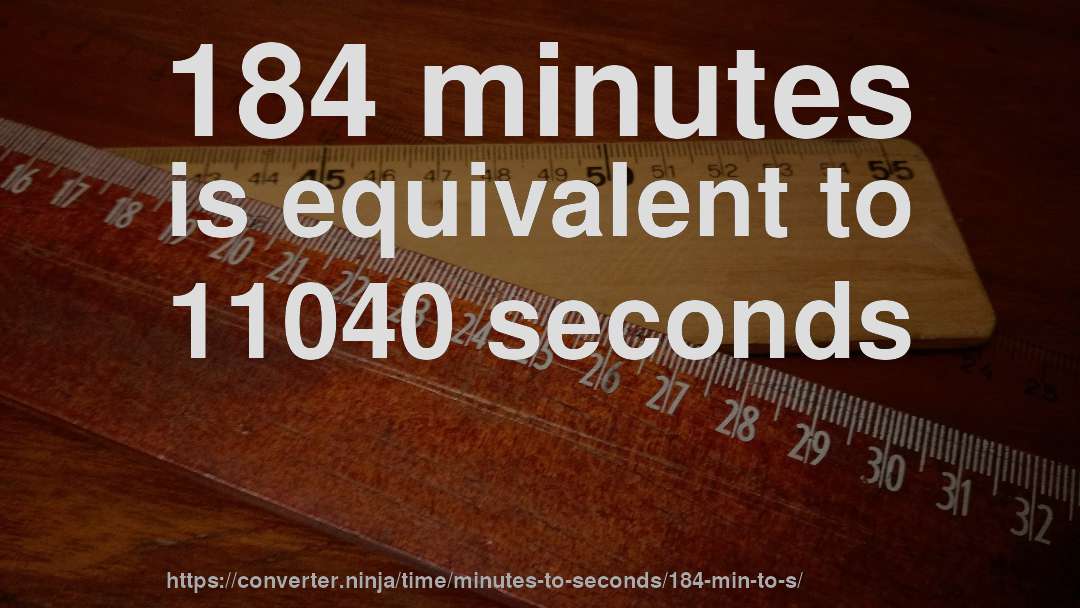
184 minutes is equivalent to 11040 seconds.
We know (by definition) that: 1 min = 60 sec
We can set up a proportion to solve for the number of seconds.
1 min 184 min = 60 sec x secNow, we cross multiply to solve for our unknown x:
x sec = 184 min 1 min * 60 sec → x sec = 11040 secConclusion: 184 min = 11040 sec
The inverse of the conversion factor is that 1 second is equal to 9.05797101449275e-05 times 184 minutes.
It can also be expressed as: 184 minutes is equal to 1 9.05797101449275e-05 seconds.
Approximation
An approximate numerical result would be: one hundred and eighty-four minutes is about eleven thousand and forty seconds, or alternatively, a second is about zero times one hundred and eighty-four minutes.
Units involved
This is how the units in this conversion are defined:
Minutes
"The minute is a unit of time or of angle. As a unit of time, the minute is equal to 1⁄60 (the first sexagesimal fraction) of an hour, or 60 seconds. In the UTC time standard, a minute on rare occasions has 61 seconds, a consequence of leap seconds (there is a provision to insert a negative leap second, which would result in a 59-second minute, but this has never happened in more than 40 years under this system). As a unit of angle, the minute of arc is equal to 1⁄60 of a degree, or 60 seconds (of arc). Although not an SI unit for either time or angle, the minute is accepted for use with SI units for both. The SI symbols for minute or minutes are min for time measurement."
Seconds
"The second (symbol s) is the base unit of time in the International System of Units. It is qualitatively defined as the second division of the hour by sixty, the first division by sixty being the minute.[3] SI definition of second is the duration of 9 192 631 770 periods of the radiation corresponding to the transition between the two hyperfine levels of the ground state of the caesium 133 atom. Seconds may be measured using a mechanical, electrical or an atomic clock. SI prefixes are combined with the word second to denote subdivisions of the second, e.g., the millisecond (one thousandth of a second), the microsecond (one millionth of a second), and the nanosecond (one billionth of a second). Though SI prefixes may also be used to form multiples of the second such as kilosecond (one thousand seconds), such units are rarely used in practice. The more common larger non-SI units of time are not formed by powers of ten; instead, the second is multiplied by 60 to form a minute, which is multiplied by 60 to form an hour, which is multiplied by 24 to form a day. The second is also the base unit of time in other systems of measurement the centimetre–gram–second, metre–kilogram–second, metre–tonne–second, and foot–pound–second systems of units."
[1] The precision is 15 significant digits (fourteen digits to the right of the decimal point).
Results may contain small errors due to the use of floating point arithmetic.ncG1vNJzZmibn6PDpr7Tnqlnppmjt6J706Kknmednru2wMSsZK2nXaiypLvNnapoaWhpeq61zWarqGWjZA%3D%3D